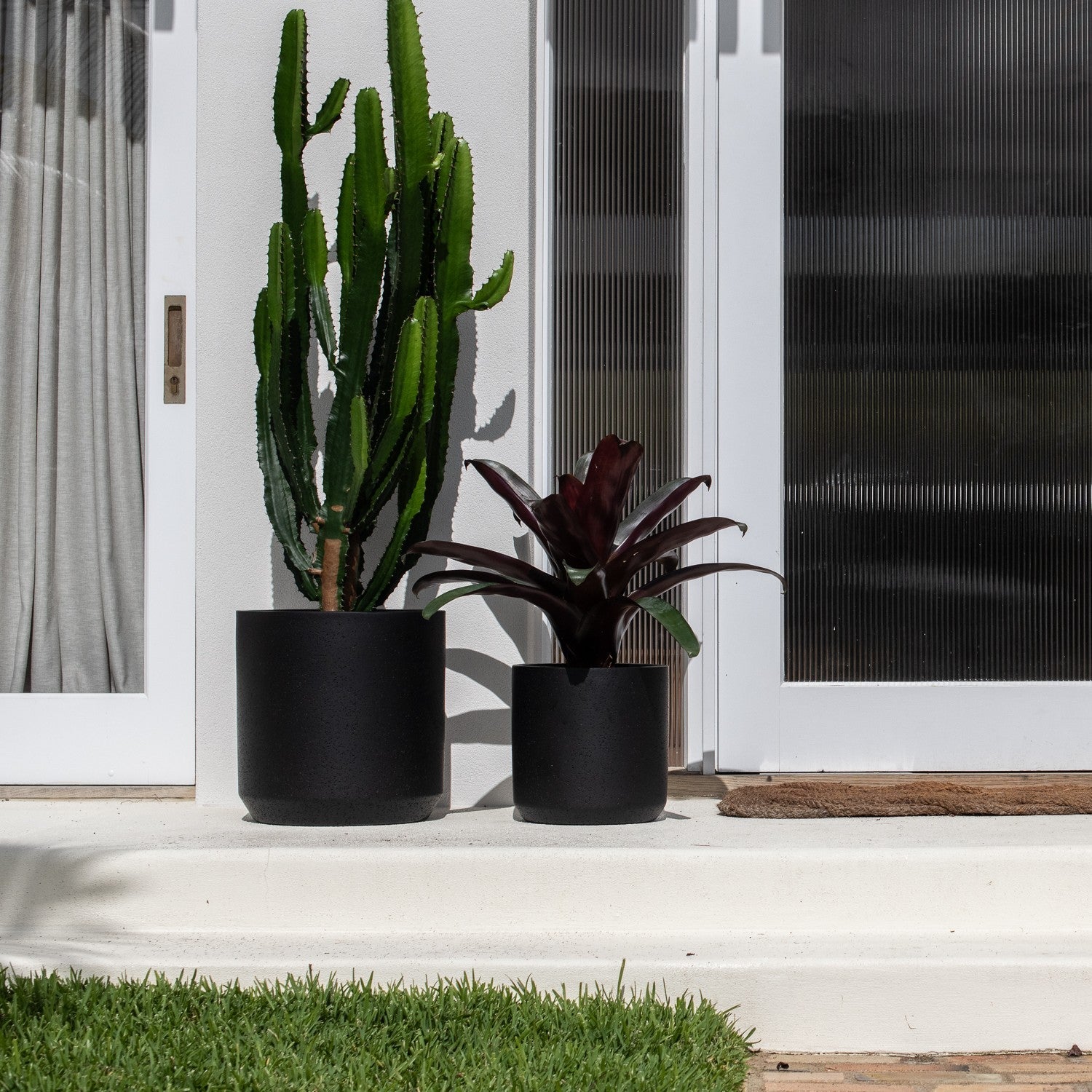Your Cart is Empty
Placing your plant in your new pot.
This is the easy part! Place your smart ring in the pot, slide in your plant still in it’s nursery pot, then cover with pebbles or bark mulch or leave as is. Simple!
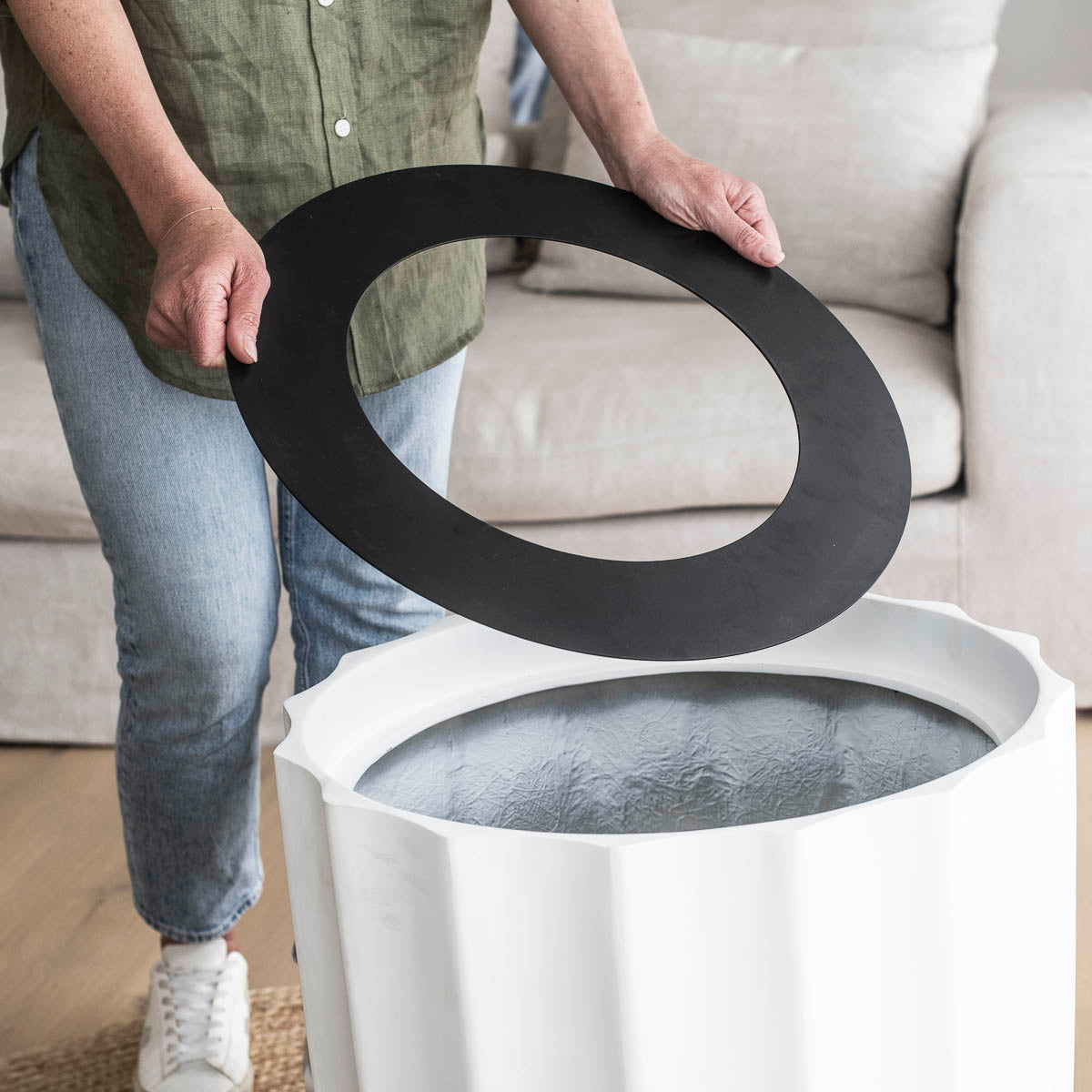
01
Place the steel smart ring into the pot.
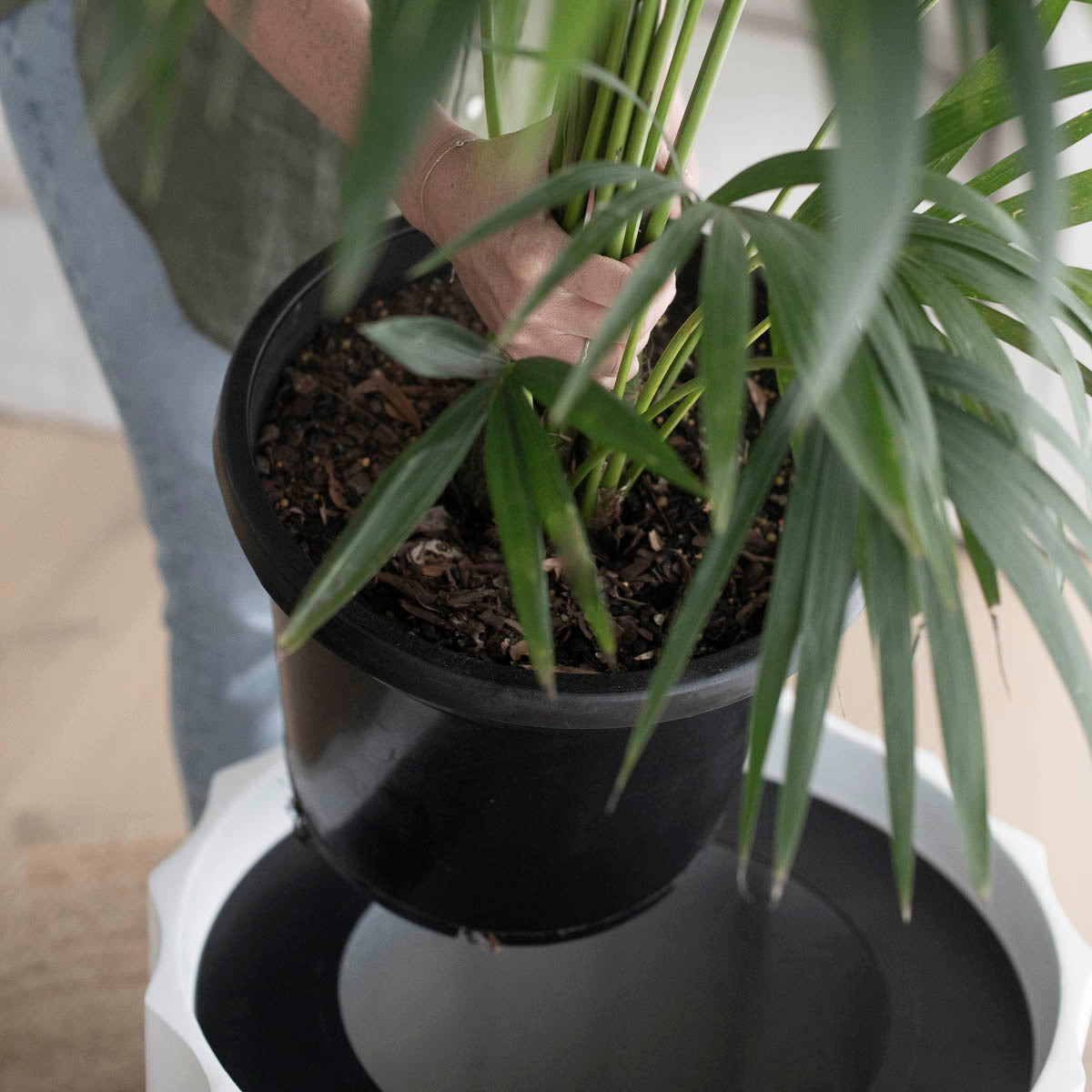
02
Pop your plastic nursery pot straight into the ring. No mess. No fuss.
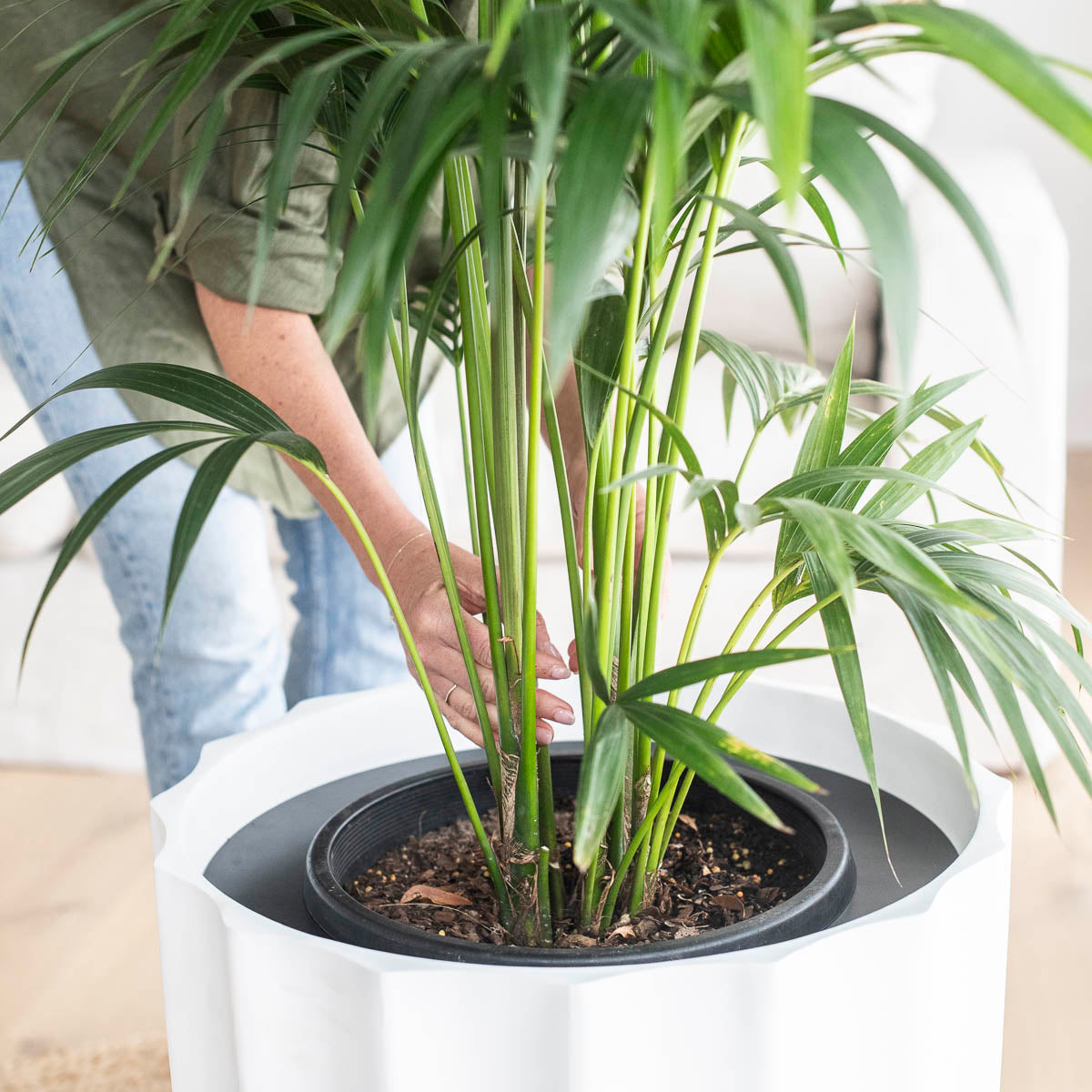
03
Cover with pebbles or bark mulch. The waterproof fibrestone pot acts as a reservoir to keep your plants thriving.
What size plant should I buy?
Our pot sets come with a set of black galvanised steel ‘smart rings, designed to fit snuggly around the plastic nursery pots your plants will come in.
Ideally you want to purchase plants in the following sized nursery pots and you’ll be ready to go.
- the largest smart ring in each set takes a 250mm nursery pot
- the medium sized smart ring (the smallest in the BAJA set of 2) takes a 200mm nursery pot
- the smallest pot in the TOKO, ALTA and OSLO sets does not come with a ring and is designed to take a 140mm nursery pot directly
These are the most common pots sizes you'll find at your local nursery and the staff will know what you're talking about!
Common Questions
-
The easiest thing to do is ask the nursery staff who will know what you’re taking about. Otherwise you can simply measure the diameter of the pot or you look under the base where the size should be written and may be in the form of a product code e.g. P200SLTL or RRSTS200 for a 200mm pot
-
In this case the best thing to do is ‘pot it up’ into the correct nursery pot size. Your local nursery will likely have 2nd hand ones which they will give away. Otherwise, they can be purchased for a couple of dollars from most nurseries and hardware stores including Flower Power, Bunnings and Mitre10.
-
No problem! Check if the nursery pots they’re in fit the smart rings and if not simply ‘pot them up’ into the right sized nursery pot. If you don’t have the nursery pot size you need your local nursery will likely have 2nd hand ones which they will give away. Otherwise, they can be purchased for a couple of dollars from most nurseries and hardware stores including Flower Power, Bunnings and Mitre10.

Helpful tips
Add a plastic tub or bucket to each pot
When using these pots in commercial jobs we will generally place a small plastic tub or bucket inside each pot to catch the water that drains through the nursery pot – This is not necessary as the pots are internally waterproofed, but it can be helpful for a number of reasons; It makes it easy to empty the excess water if you ever need to, it provides another layer of protection from water spills in case your pot is ever damaged, and it also protects your pots waterproof lining from being damaged by your plants roots (overtime these may grow through the drainage holes of the nursery pot).
Use a ‘wick’ to help your plant become self-watering
By inserting a cloth wick through one of the drainage holes in the nursery pot up into the plants root ball (as shown in the image below) your plant will be able to draw up water from the reservoir as needed. This reduces how often you’ll need to water, helps to prevent the soil drying out and is especially handy when you’re away from home for extended periods. In a commercial setting, plants set up in this way will often only be watered in 3 to 4 weeks.
To make a wick you can use any material you have around the home such as an old rag, dishwashing cloth, towel, rope or similar. Simply cut a strip of the material into a length of roughly 30cms and using a screw driver or similar push one end up through one of the nursery pot drainage holes into the plants root ball, leaving roughly half of the wick hanging out. This trailing end of the wick will sit in the water collected at the bottom of your pot and overtime be drawn up by the plants roots.
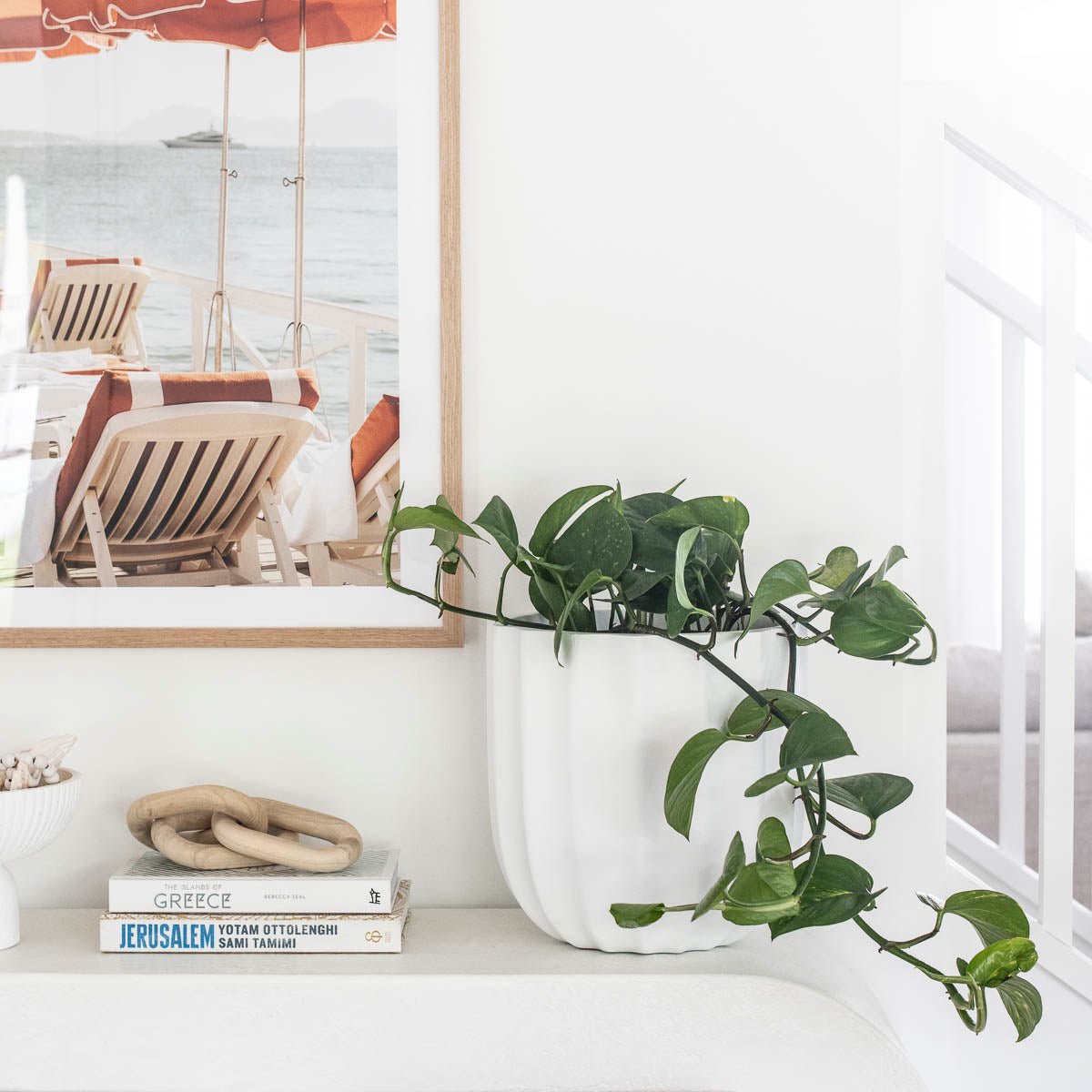
Spring Refresh - Our top plant picks to refresh your indoor plant collection.
The Best Indoor Plants for Spring. Whether you’re after vibrant foliage, pops of colour, or easy-care greenery, here are some of the best indoor plants to brighten up your space this spring.
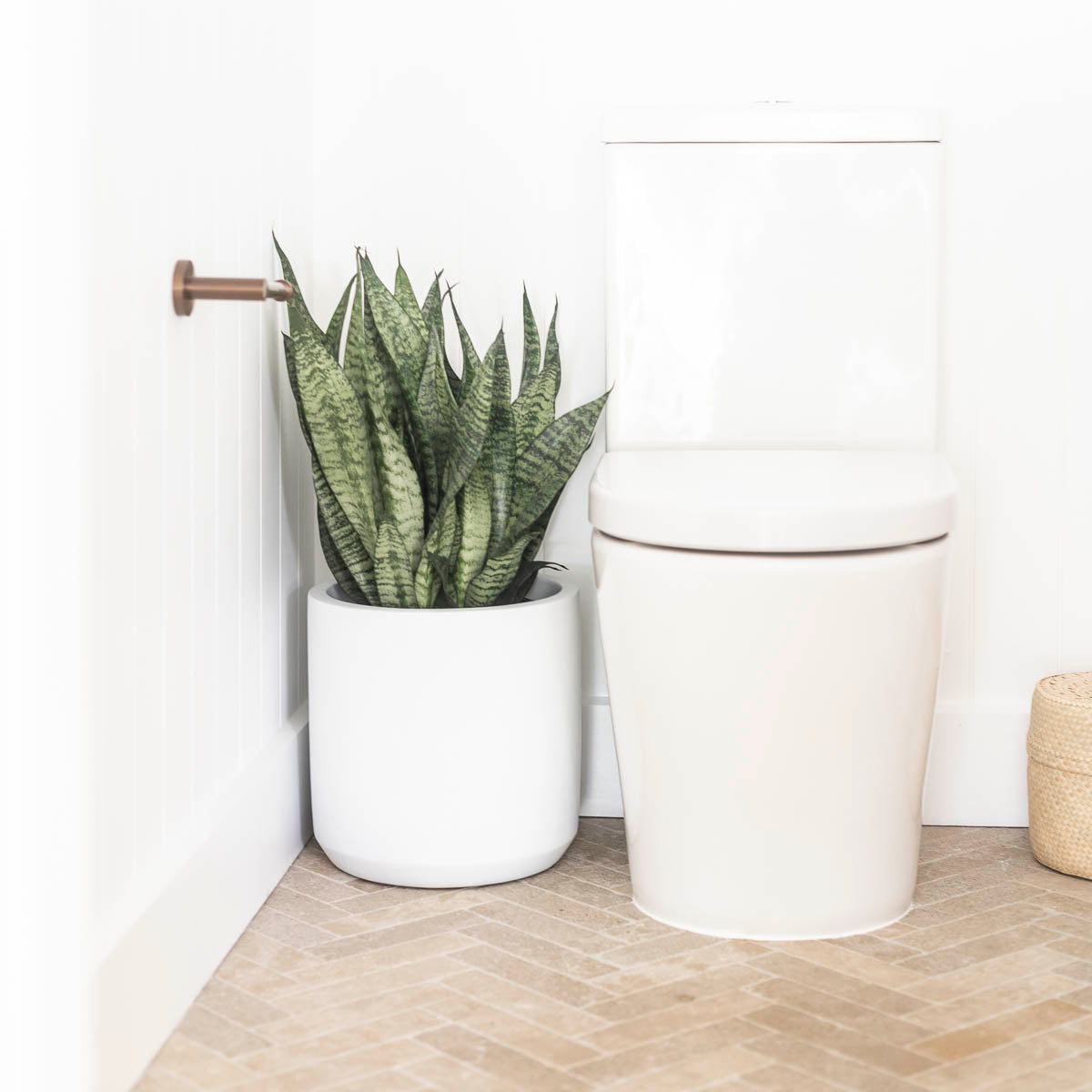
Indoor Plants That Thrive in Low Light Spaces
Not every home is blessed with big, sunny windows—and that’s okay! Plenty of indoor plants actually prefer shady corners and soft, indirect light.
So, if you’ve got a dim hallway, a cosy bedroom nook, or an office without direct sunlight, here’s your line-up of low-light superstars.
Share Your Style
FOLLOW US
Tag us @indoor_pot_supply_co and we will send you a free handy moisture reader tool so you can care for your plants like a pro.







